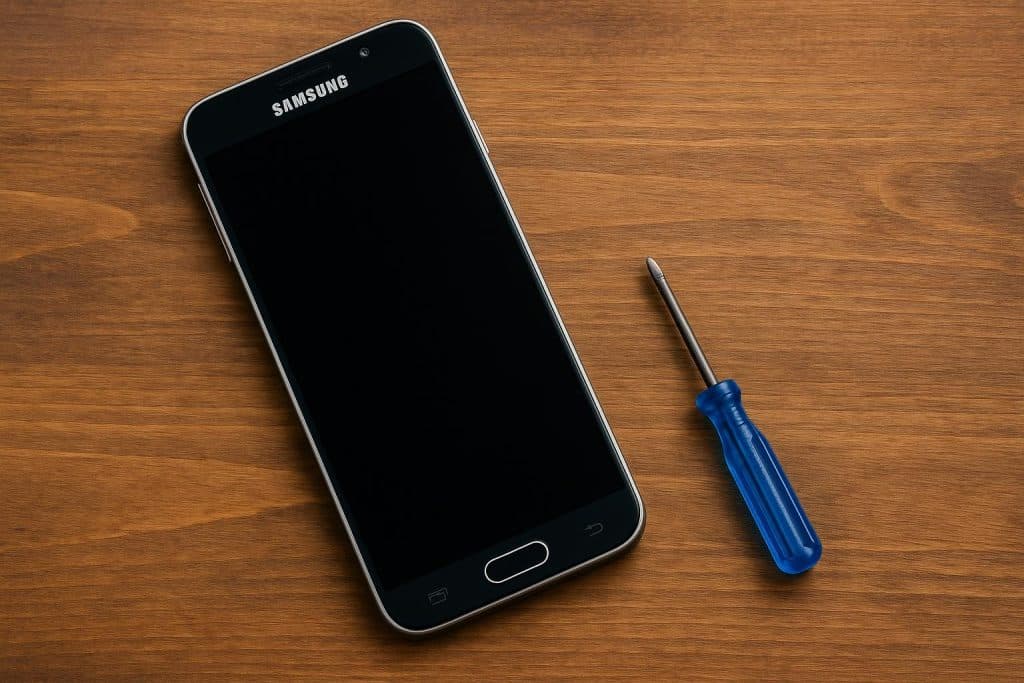The Samsung black screen issue—often referred to as the “Black Screen of Death”—is a deeply frustrating problem that leaves a highly functional smartphone completely inert. The screen remains pitch black, unresponsive to touches, and often, the device seems utterly lifeless, even though it may still be powered on, perhaps indicated by subtle vibrations or notification sounds. This state of limbo prevents users from accessing their critical data, making calls, or simply using their device.
The black screen problem is a frequent complaint across various Samsung Galaxy models, from the S-series flagships to the A-series mid-rangers. It can be triggered by several factors, including software glitches, depleted batteries, corrupted updates, or underlying hardware failure. While the cause can be complex, the good news is that for most users, the issue is software-related and fixable without an expensive trip to a repair shop. We will explore the common reasons and the steps to resolve this paralysing issue, highlighting DroidKit as the most efficient and comprehensive software repair solution.
What Is the Samsung Black Screen Issue and Why It Happens
Before attempting a fix, it helps to narrow down the potential cause:
- Software Glitches or Crashes: A buggy app, failed update, or corrupted system file can crash the display driver, leaving the screen black even if the phone is still running.
- Battery Depletion or Failure: If the battery is completely drained, the phone will display a black screen. Sometimes, a defective charging port or a failing battery can prevent the phone from powering on correctly, mimicking a black screen issue.
- Hardware Damage: Physical drops or water exposure can damage the display connector or the internal circuit board (motherboard), leading to a permanent hardware-based black screen.
- System Cache Overload: Over time, corrupted temporary files and a filled system cache can bog down the operating system to the point of a critical display failure.
How to Troubleshoot and Fix Samsung Black Screen Issues Step by Step
The troubleshooting process should start with the simplest checks and gradually move to more intensive software repairs.
Method 1: Checking Power and Display
- Force Restart (The Key Combination): Since the screen is black, you cannot use the on-screen controls. A force restart can clear minor software glitches and bring the display back to life.
- Check Battery and Charging: Connect the device to a known working charger and outlet. Leave it charging for at least 30 minutes. If the issue was purely due to battery depletion, the charging icon should eventually appear, or the device should power on normally. Try a different cable and adapter to rule out accessory failure.
- Check for Minor Damage: Press gently on the screen and around the edges. Sometimes, a loose display cable connection can be temporarily re-seated by slight pressure.
Method 2: Entering Recovery or Download Mode
If the force restart fails, but you suspect a software issue, you need to determine if the phone’s core system is still functional. You can do this by attempting to enter one of the system modes:
- Download Mode (Odin Mode): This mode is used for flashing firmware and indicates the phone is still communicable. The combination often involves holding Volume Down + Power while plugging the phone into a PC.
- Recovery Mode: This mode allows you to clear the cache partition or perform a factory reset. The combination often involves holding Volume Up + Power (and sometimes the Bixby button).
If you can successfully get the phone into either of these modes (meaning the screen lights up), the problem is definitively software-related, and you can proceed to the dedicated repair solution.
Fix Samsung Black Screen Safely with DroidKit System Repair
When simple restarts and cache clears fail, or if the process of manually downloading and flashing firmware (via Odin) is too technical and risky, a professional repair tool is necessary. DroidKit provides a dedicated System Fix feature specifically designed to resolve serious Android OS issues, including the Samsung black screen.
How DroidKit Fixes the Black Screen Issue
DroidKit automates the complex process of system repair, eliminating the high chance of error associated with manual flashing:
- Select System Fix: Launch DroidKit on your computer and select the “System Fix” function. Connect your black-screen Samsung phone.
- Enter Download Mode: DroidKit will guide you step-by-step on how to put your specific Samsung model into Download Mode—the essential state for firmware installation.
- Download Firmware: Once in Download Mode, DroidKit automatically detects your Samsung device’s PDA code and downloads the official, verified Samsung firmware package required for the repair. This eliminates the danger of downloading incorrect or malicious firmware.
- Initiate Fix: After the firmware package is downloaded, DroidKit begins the repair process. It replaces the corrupted system files on your device with the fresh, official firmware.
- Successful Reboot: Once the process is complete, the phone will automatically reboot, and the black screen issue should be resolved, restoring the device to full functionality.
It is important to acknowledge that performing a major system repair or flashing new firmware often requires erasing user data to ensure system stability. While DroidKit’s System Fix is highly effective, you should be prepared for potential data loss if the system needs to be fully overwritten.
Final Thoughts
The Samsung black screen issue can feel like a devastating loss, but for the majority of users, it is a manageable software glitch. By first attempting the simple force restart and checking the charging status, you can often quickly restore your device. However, when those basic steps fail, professional software like DroidKit provides the safest, most reliable, and least technical path to a full resolution. Its automated process for obtaining and flashing official firmware makes it the essential tool for anyone facing the dreaded Samsung Black Screen of Death.
